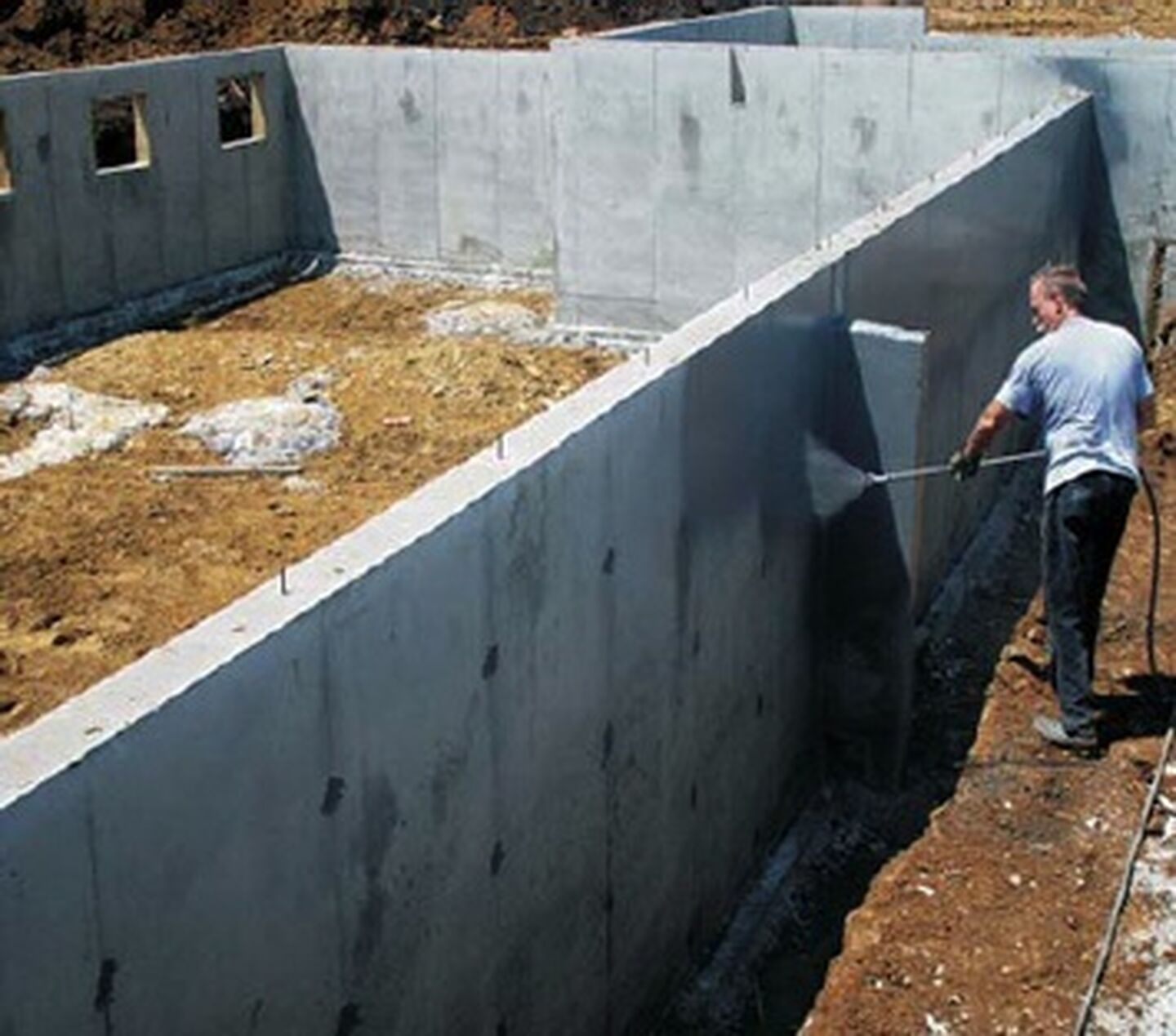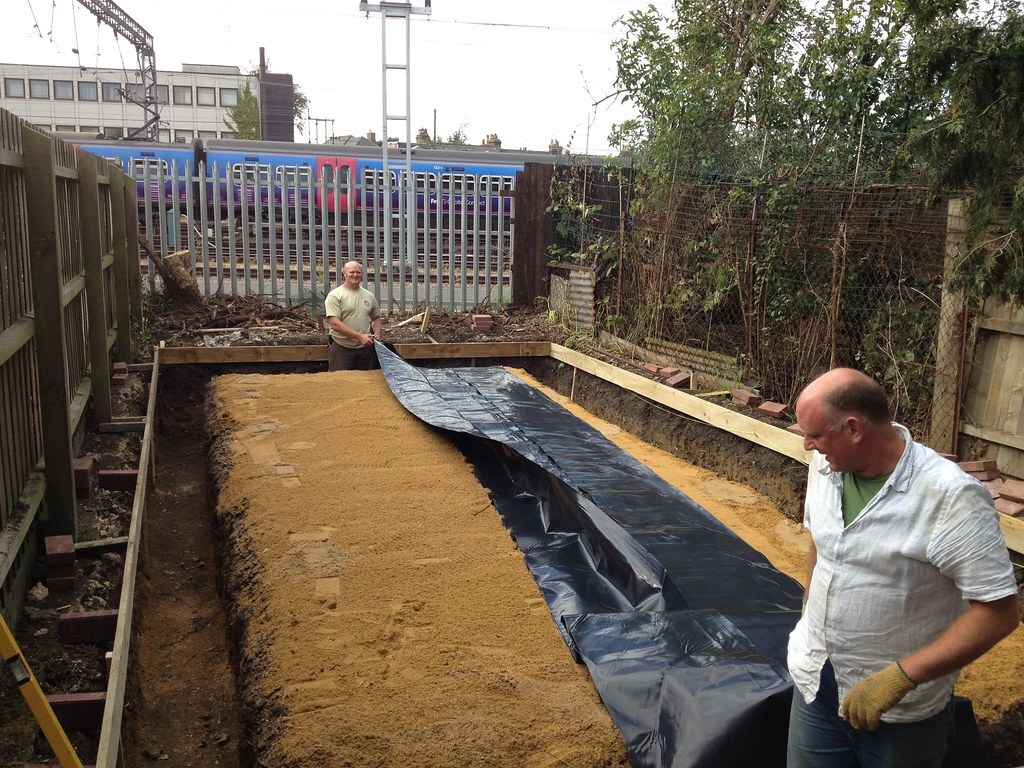Exploring the Numerous Methods and Solutions for Effective Damp Proofing
Wetness in buildings presents substantial obstacles to both architectural honesty and interior air top quality. Various methods and remedies have emerged to combat this prevalent concern. From conventional damp-proof membranes to cutting-edge chemical treatments, each technique provides distinct advantages. Understanding these choices is necessary for reliable wetness control. Nonetheless, picking the right option relies on particular building conditions and needs, prompting additional expedition right into the most effective damp proofing approaches available.
Understanding the Causes of Wetness
Wetness can develop from various resources, comprehending these causes is vital for effective removal. Generally, wetness stems from 3 key resources: rising moist, permeating moist, and condensation. Climbing wet takes place when groundwater takes a trip up via porous materials, such as brick or rock, frequently due to a lack of an effective barrier (damp proofing newcastle). Penetrating wet is normally triggered by exterior variables, including roof leakages, damaged seamless gutters, or damaged wall surfaces, permitting water to infiltrate a residential or commercial property. Condensation, on the various other hand, arises from excess wetness in the air, usually intensified by bad air flow and temperature differences, leading to water droplets basing on surface areas. Recognizing these underlying concerns is vital, as each sort of dampness requires a tailored technique for removal. Correct assessment aids in determining one of the most efficient services, inevitably guarding the structural honesty of a structure and improving indoor air top quality
Traditional Damp-Proof Membranes

Chemical Damp-Proofing Solutions
Chemical damp-proofing remedies provide an innovative strategy to protecting against moisture breach in buildings. These approaches normally entail the application of fluid chemicals that penetrate stonework and form an obstacle against increasing moist. Typically made use of chemicals include silanes, siloxanes, and other water-repellent representatives that respond with surface area products to produce a hydrophobic layer.The application procedure normally requires boring holes into the wall surfaces, infusing the chemical solution, and allowing it to heal. This method is especially helpful for older structures where standard damp-proof membranes might be impractical. Chemical damp-proofing can be much less turbulent and much more economical than substantial renovation projects.While effective, these solutions depend on proper application and environmental conditions for peak performance. damp specialist newcastle. Routine upkeep and surveillance are important to ensure the durability of the damp-proofing treatment. In general, chemical damp-proofing stands for a flexible alternative for securing buildings against moisture-related damage
Cavity Wall Building And Construction Methods
Cavity wall building and construction techniques offer numerous benefits, specifically in dampness control and energy efficiency. By including an air void in between two layers of stonework, these walls properly reduce water access while enhancing insulation. This mix not only safeguards frameworks from wetness yet likewise adds to decreased energy usage.
Advantages of Cavity Wall Surfaces
When thinking about effective damp proofing approaches, the advantages of cavity wall surfaces stand out plainly. Cavity wall surfaces include 2 different layers, developing an air void that efficiently decreases dampness penetration. This style minimizes the threat of dampness, as the external wall surface works as an obstacle versus rainfall and water ingress. Furthermore, dental caries wall surfaces improve thermal insulation, which adds to power efficiency by reducing heat loss. They likewise provide sound insulation, aiding to develop a quieter indoor environment. The air void permits for ventilation, which assists in moisture control and reduces the likelihood of mold growth. These advantages not just enhance the overall convenience of a structure yet also contribute to its longevity and structural stability.
Wetness Control Methods
Reliable dampness control approaches are crucial in dental caries wall surface construction to ensure lasting security versus moisture. One primary approach includes the incorporation of weep holes, which facilitate water drainage from the cavity, avoiding accumulation. In addition, making use of breathable membranes can help take care of dampness degrees while permitting entraped vapor to escape. Appropriate positioning of insulation is likewise essential, as it must not block drainage courses. Furthermore, making certain that the external fallen leaves of the dental caries wall surface are created with waterproof materials boosts general toughness. Regular upkeep checks are vital to identify any type of obstructions or damages early, guarding the structure's stability. Inevitably, a mix of these methods creates a durable defense against wetness breach in dental caries walls.
Insulation and Energy Efficiency
Insulation plays an important role in improving power performance within dental caries wall surface building and construction. By incorporating insulating products, these walls develop a thermal obstacle that reduces heat loss and decreases energy intake. Efficient insulation not just assists maintain a stable indoor temperature however also reduces the risk of wetness, as it protects against condensation within the wall surface dental caries. Numerous methods, such as making use of rigid foam boards or mineral woollen, can be utilized to attain ideal insulation performance. In addition, correct installment is important to guarantee that voids and gaps are lessened, which can otherwise endanger power efficiency. Inevitably, a well-insulated dental caries wall contributes significantly to general sustainability and reduces heating and air conditioning expenses for home owners.
Exterior Damp Proofing Approaches
Outside damp proofing approaches are necessary for shielding structures from dampness infiltration. 2 effective methods consist of the application of waterproof membranes and the setup of French drains. These services help minimize water buildup and maintain the integrity of structures.
Waterproof Membrane Application
While different techniques exist for preventing dampness access, the application of water resistant membrane layers remains an extremely reliable external moist proofing technique. These membrane layers are normally made from products such as polyethylene, rubber, or modified bitumen, giving a robust barrier versus water infiltration. The installment procedure entails applying the membrane to the outside surface areas of structures or walls, making sure complete insurance coverage to stop leaks. Proper adhesion and sealing at joints are critical to taking full advantage of performance. Waterproof membrane layers can be applied in numerous forms, consisting of fluid layers and sheet membranes, enabling for versatility based on the particular demands of the structure. This method not just safeguards structures from wetness but additionally boosts their long life and structural honesty.
French Drainpipe Setup
One effective technique for taking care of click here groundwater and preventing moisture build-up around a structure's structure is the installment of a French drain. This drain system consists of a trench loaded with crushed rock and a perforated pipe that reroutes surface area water far from the structure. Proper setup needs cautious planning, making sure that the drainpipe inclines away from the framework to help with optimal water flow. In addition, the area of the drain is essential; it needs to be placed in locations susceptible to merging or excess wetness. Normal maintenance, consisting of clearing up debris from the gravel and ensuring the pipeline stays unobstructed, is crucial for lasting efficiency. Eventually, a well-installed French drainpipe can greatly minimize the threat of water-related problems in foundations and cellars.
Interior Waterproofing Techniques
Inside waterproofing methods are vital for safeguarding a structure's inside from wetness seepage and potential water damages. These approaches usually include the application of specialized materials and techniques made to produce a dampness obstacle within the framework. One usual strategy is making use of water resistant layers or sealants on wall surfaces and floorings, which avoid wetness from passing through surfaces.Additionally, installing indoor drain systems, such as sump pumps, can effectively handle water buildup in cellars and crawl rooms. Another approach includes making use of vapor barriers, which are mounted to hinder dampness movement from the ground right into living spaces.Moreover, resolving any fractures or voids in wall surfaces or foundations with ideal sealers assures an extensive defense against water intrusion. By carrying out these interior waterproofing approaches, homeowner can substantially minimize the danger of mold and mildew development, architectural damage, and other moisture-related issues. Correct execution of these techniques is crucial for long-lasting security and structure stability.
Routine Maintenance and Inspection Practices
Normal upkeep and examination methods are essential for guaranteeing the long-lasting performance of moist proofing services in any structure. Routine checks make it possible for homeowner to determine very early indicators of dampness intrusion, such as peeling off paint, mold growth, and mildewy smells. These signs can indicate underlying problems that need instant attention.Inspections must be carried out at the very least every year, concentrating on vulnerable areas like basements, creep rooms, and outside walls. Throughout these analyses, homeowner should take a look at sealers, drain systems, and ventilation to confirm they function correctly.Additionally, keeping downspouts and seamless gutters is necessary, as blocked systems can bring about water build-up near the structure. Implementing a routine maintenance routine, along with prompt fixings, can considerably prolong the lifespan of damp proofing actions and safeguard the architectural integrity of the structure. Proactive procedures eventually contribute to the total health and wellness of the living environment.
Frequently Asked Questions
How Much Time Does Damp Proofing Generally Last?
The period of damp proofing efficiency differs, usually lasting between 20 to half a century. Variables such as application top quality, ecological conditions, and maintenance practices significantly influence the durability of the damp proofing therapy.

Can I Damp Proof My Home Myself?
The individual contemplated the usefulness of DIY damp proofing. With appropriate research study and the right materials, it is possible. They additionally acknowledged the importance of professional guidance to guarantee long-lasting effectiveness and prevent future issues.
What Are the Signs of Inefficient Damp Proofing?
Indications of inadequate wet proofing include persistent musty smells, noticeable mold growth, peeling paint, damp spots on wall surfaces, and wood decay - damp proofing newcastle. Home owners should attend to these concerns without delay to stop more damage and wellness concerns
Does Damp Proofing Affect Indoor Air Top Quality?

Just How Much Does Expert Damp Proofing Price?
Expert wet proofing expenses differ substantially, generally varying from $1,000 to $5,000 relying on the residential or commercial property's dimension, the extent of the wet concern, and selected techniques. Each circumstance calls for a customized analysis for exact pricing. Typically, wetness stems from three key sources: rising damp, passing through damp, and condensation. When considering reliable moist proofing methods, the benefits of tooth cavity walls stand out plainly. Exterior wet proofing techniques are important for securing frameworks from dampness seepage. While numerous techniques exist for stopping dampness ingress, the application of water-proof membranes remains a highly effective exterior damp proofing method. Indicators of ineffective wet proofing include relentless mildewy odors, visible mold development, peeling paint, damp patches on wall surfaces, and timber decay.
 Michael J. Fox Then & Now!
Michael J. Fox Then & Now! Romeo Miller Then & Now!
Romeo Miller Then & Now! Jennifer Love Hewitt Then & Now!
Jennifer Love Hewitt Then & Now! Jeremy Miller Then & Now!
Jeremy Miller Then & Now! Jane Carrey Then & Now!
Jane Carrey Then & Now!